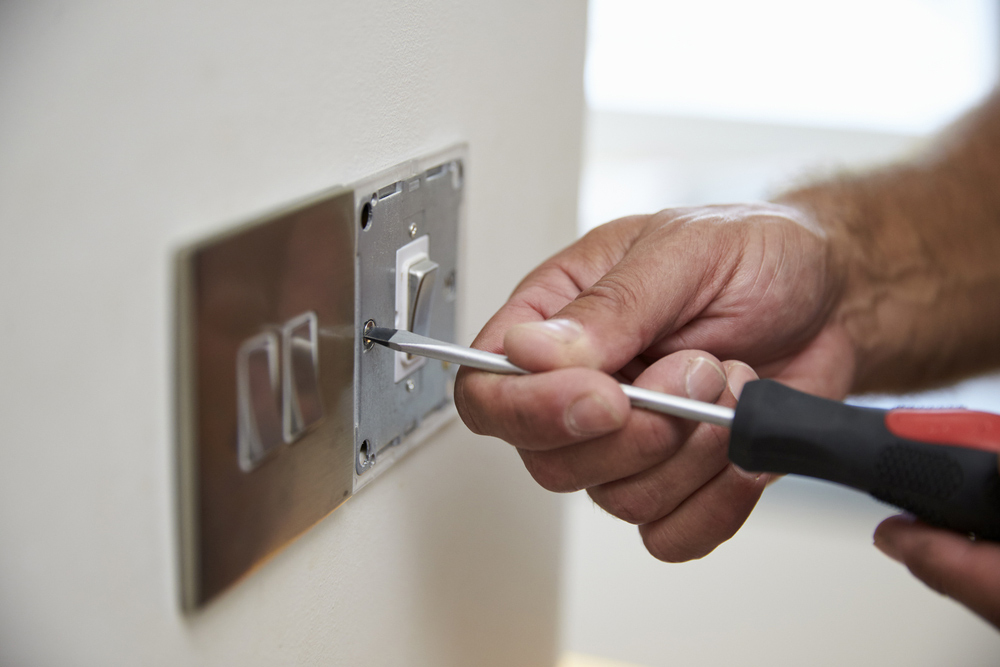Flickering lights in your home can be more than just an annoyance; they might indicate underlying electrical issues. Understanding what causes these flickers can ensure the safety and functionality of your electrical system. Let’s explore the seven primary reasons that might cause this and how you can address them.
1. Electrical Load Imbalance
The Role of Balanced Loads
An uneven distribution of electrical load across different circuits is a common cause of flickering lights. Each circuit in a home is designed to handle a specific load. When the balance is disturbed, with one circuit bearing a heavier load than it is designed for, it can lead to flickering lights.
Distribution Is Key
To keep your lights from flickering, it’s important to ensure that heavy electrical appliances, like refrigerators or washing machines, are distributed evenly across circuits. Avoid plugging multiple high-wattage appliances into the same circuit.
2. Faulty Light Bulbs
- Mismatched Bulbs: Using bulbs that are incompatible with a fixture can lead to flickering.
- Expired Lifespan: If the bulbs are reaching the end of their expected lifespan, they may start to flicker before they burn out completely.
- Suggestion: Always check the fixture’s specifications and ensure the bulb you choose is suitable.
3. Loose Wiring Connections
A connection that’s not secure can cause intermittent disruptions. Regular inspections of the electrical system can help identify and rectify any loose wiring. If you suspect loose wiring in your home, it’s imperative to avoid DIY fixes; instead, contact a certified electrician to inspect and repair the issue.
4. Voltage Fluctuations
Importance of Consistent Voltage
An inconsistent voltage supply to your home can manifest as flickering lights. A constant and stable voltage is important for the optimal functioning of all electrical appliances and fixtures.
The Role of Protectors
Stabilisers and surge protectors can play a significant role in ensuring a consistent voltage supply. They help prevent damage to electrical appliances and reduce the occurrence of flickering lights.
5. Defective Light Switches
The primary function of light switches is to control the power supply to light fixtures, ensuring they turn on and off as desired. A seamless operation of these switches is important for consistent lighting in any space. If there is a noticeable delay between flipping the switch and the light turning on, it could indicate a defect. If the light flickers only when the switch is activated but stabilises afterwards, the switch might be the problem.
Causes of Switch Defects
Light switches, like all electrical components, have a lifespan and they can degrade over time. Frequent usage, poor manufacturing quality, exposure to moisture or even electrical surges can reduce their efficiency and lead to malfunctions. If you suspect a light switch to be defective, turn off the power at the main circuit breaker. If it shows clear signs of wear or damage, get it replaced.
Preventative Measures
When installing new switches, opting for high-quality products can ensure longevity and reduce the frequency of replacements. Periodic inspections of all switches, especially in high-traffic areas, can help identify issues before they escalate.
6. Issues with the Electrical Grid
The electrical grid is a vast interconnected network responsible for delivering electricity. Its seamless functioning ensures homes, businesses and essential services receive a continuous power supply.
Broader Issues
Sometimes, the problem lies beyond your home. Issues at the local power station or with the broader grid can lead to flickering lights in multiple houses in an area.
Reporting Is Important
If you notice the flickering isn’t limited to your home but is affecting the neighbourhood, it’s imperative to report this to the concerned authorities so that they can address the problem.
7. Incompatible Dimmer Switches
- Dimmer Compatibility: Not every dimmer switch works seamlessly with every light bulb. Incompatibility can lead to flickering.
- Reading Specifications: Always refer to the specifications provided for both the dimmer switch and the bulb. Ensure they’re compatible.
- Suggestion: When in doubt, consulting with a reliable electrician can ensure the right products are selected.
Need Assistance with Flickering Lights?
At O'Brien Electrical & Plumbing Coopers Plains, we understand the nuances of electrical issues and their implications. Whether you’re dealing with flickering lights or any other electrical concern, our team is ready to assist. Reach out to us for tailored solutions that cater to your unique needs. Our emergency electricians in Coopers Plains will ensure your home’s electrical system is efficient and safe.




